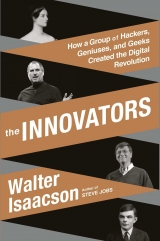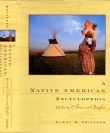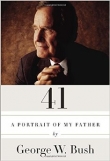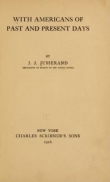
Текст книги "The Innovators: How a Group of Inventors, Hackers, Geniuses, and Geeks Created the Digital Revolution"
Автор книги: Walter Isaacson
Жанр:
Биографии и мемуары
сообщить о нарушении
Текущая страница: 21 (всего у книги 42 страниц)
The result, at once both simple and profound, was a classic physical expression of the augmentation ideal and the hands-on imperative. It made use of the human talent of mind-hand-eye coordination (something robots are not good at) to provide a natural interface with a computer. Instead of acting independently, humans and machines would act in harmony.
Engelbart gave his sketch to Bill English, who carved a piece of mahogany to make the first model. When they tried it on their focus group, it tested better than any other device. At first, the cord was in front, but they quickly realized it worked better coming out of the back end, like a tail. They dubbed the device a “mouse.”
Most true geniuses (Kepler, Newton, Einstein, and even Steve Jobs, to name a few) have an instinct for simplicity. Engelbart didn’t. Desiring to cram a lot of functionality into any system he built, he wanted the mouse to have many buttons, perhaps up to ten. But to his disappointment, the testing determined that the optimum number of buttons the mouse should have was three. As it turned out, even that was at least one button too many, or perhaps, as the simplicity-freak Jobs would later insist, two buttons too many.
Over the next six years, culminating in 1968, Engelbart went on to devise a full-fledged augmentation system that he called “oNLine System,” or NLS. In addition to the mouse, it included many other advances that led to the personal computer revolution: on-screen graphics, multiple windows on a screen, digital publishing, blog-like journals, wiki-like collaborations, document sharing, email, instant messaging, hypertext linking, Skype-like videoconferencing, and the formatting of documents. One of his technocharged protégés, Alan Kay, who would later advance each of these ideas at Xerox PARC, said of Engelbart, “I don’t know what Silicon Valley will do when it runs out of Doug’s ideas.”38
THE MOTHER OF ALL DEMOS
Engelbart was more into Greek folk dances than Trips Festivals, but he had gotten to know Stewart Brand when they experimented with LSD at the same lab. Brand’s succession of ventures, including the Whole Earth Catalog, were based just a few blocks from Engelbart’s Augmentation Research Center. Thus it was natural that they team up for a demonstration in December 1968 of Engelbart’s oNLine System. Thanks to Brand’s instincts as an impresario, the demo, which later became known as the Mother of All Demos, became a multimedia extravaganza, like an Electric Kool-Aid Acid Test on silicon. The event turned out to be the ultimate melding of hippie and hacker culture, and it has remained unchallenged, even by Apple product launches, as the most dazzling and influential technology demonstration of the digital age.39
The year had been turbulent. In 1968 the Tet Offensive turned America against the Vietnam War, Robert Kennedy and Martin Luther King were assassinated, and Lyndon Johnson announced he would not seek reelection. Peace protests shut down major universities and disrupted the Democratic National Convention in Chicago. The Russians crushed Prague Spring, Richard Nixon was elected president, and Apollo 8 orbited the moon. Also that year, Intel was founded and Stewart Brand published the first Whole Earth Catalog.

Doug Engelbart (1925–2013).

Englebart’s first mouse.

Stewart Brand (center) assisting at the Mother of All Demos in 1968.
Engelbart’s ninety-minute demonstration occurred on December 9 in front of a standing-room-only crowd of close to a thousand at a computer industry conference in San Francisco. Wearing a short-sleeved white shirt and dark skinny tie, he sat on the right of the stage in a sleek Herman Miller “Action Office” console. The display of his computer terminal was projected onto a twenty-foot screen behind him. “I hope you’ll go along with this rather unusual setting,” he began. He wore a microphone headset that a fighter pilot might use, and he spoke in a monotone, like a computer-generated voice trying to emulate the narrator in an old movie newsreel. Howard Rheingold, a cyberculture guru and chronicler, later said that he looked like “the Chuck Yeager of the computer cosmos, calmly putting the new system through its paces and reporting back to his astonished earthbound audience in a calm, quiet voice.”40
“If in your office,” Engelbart intoned, “you as an intellectual worker were supplied with a computer display backed up by a computer that was alive for you all day and was instantly responsive to every action you have, how much value could you derive from that?” He promised that the combination of technologies he was about to demonstrate would “all go very interesting,” and then he muttered under his breath, “I think.”
A camera mounted on his terminal provided a video stream of his face, while another camera overhead showed his hands controlling the mouse and keyboard. Bill English, the mouse crafter, sat in the back of the auditorium like a newsroom producer selecting which images were mixed, matched, and projected on the big screen.
Stewart Brand was thirty miles south at Engelbart’s lab near Stanford, generating computer images and working cameras. Two leased microwave lines and a telephone hookup transmitted to the lab every mouse and keyboard click Engelbart made, then sent images and information back to the auditorium. The audience watched incredulously as Engelbart collaborated with distant colleagues to create a document; different people made edits, added graphics, changed the layout, built a map, and embedded audio and visual elements in real time. They even were able to create hypertext links together. In short, Engelbart showed, back in 1968, nearly everything that a networked personal computer does today. The demo gods were with him, and to his amazement there were no glitches. The crowd gave him a standing ovation. Some even rushed up to the stage as if he were a rock star, which in some ways he was.41
Down the hall from Engelbart, a competing session was being presented by Les Earnest, who had cofounded, with the MIT refugee John McCarthy, the Stanford Artificial Intelligence Lab. As reported by John Markoff in What the Dormouse Said, their session featured a film about a robot that acted as if it could hear and see things. The two demos presented a clear contrast between the goal of artificial intelligence and that of augmented intelligence. The latter mission had seemed rather quirky when Engelbart began working on it, but when he showed off all of its elements in his December 1968 demo—a personal computer that humans could easily interact with in real time, a network that allowed collaborative creativity—it overshadowed the robot. The headline of the story from the conference in the next day’s San Francisco Chronicle was “Fantastic World of Tomorrow’s Computer.” It was about Engelbart’s oNLine System, not about the robot.42
As if to seal the marriage of the counterculture and cyberculture, Brand brought Ken Kesey to Engelbart’s lab to experience the oNLine System. Kesey, by then famous from Tom Wolfe’s The Electric Kool-Aid Acid Test, got a full tour of how the system could cut, paste, retrieve, and collaboratively create books and other documents. He was impressed. “It’s the next thing after acid,” Kesey pronounced.43
ALAN KAY
Alan Kay struggled to make sure that he got to Engelbart’s Mother of All Demos. He had a 102-degree fever and strep throat, but he was able to drag himself onto a plane from Utah, where he was a graduate student. “I was shivering and sick and could barely walk,” he recalled, “but I was determined to get there.”44 He had already seen and embraced Engelbart’s ideas, but the drama of the demonstration struck him like a clarion call. “To me he was Moses opening the Red Sea,” Kay said. “He showed us a promised land that needed to be found, and the seas and rivers we needed to cross to get there.”45
Like Moses, Engelbart would not actually make it to that promised land. Instead it would be Kay and a merry band of colleagues at the research center of a copier company who would be at the forefront of bringing the ideas of Licklider and Engelbart into the paradise of personal computing.
Kay had learned to love both the sciences and humanities as a child in central Massachusetts, where he was born in 1940. His father was a physiologist who designed artificial legs and arms. On long walks with him, Kay developed a love of science. But he also became passionate about music. His mother was an artist and musician, just as was her father, Clifton Johnson, a noted illustrator and author who played the pipe organ at their local church. “Since my father was a scientist and my mother was an artist, the atmosphere during my early years was full of many kinds of ideas and ways to express them. I did not distinguish between ‘art’ and ‘science’ and still don’t.”46
At seventeen he went away to music camp, where he played guitar and was a member of the jazz band. He also, like his grandfather, loved pipe organs, and he eventually helped a master builder construct one in the Spanish baroque style for a Lutheran seminary. He was a savvy and well-read student who often got in trouble in school, mainly for insubordination, a trait of many tech innovators. He was almost expelled, but he also starred on the national radio show Quiz Kids.
Kay enrolled in Bethany College in West Virginia to study math and biology, but he was kicked out during the spring of his first year after “excessive unexcused absences.” For a while he hung out in Denver, where a friend had taken a job tending to United Airlines’ reservation computer system. Kay was struck that the computers seemed to increase rather than reduce drudge work for humans.
Faced with being drafted, he enlisted in the Air Force, where his top scores on an aptitude test led him to be tapped for training as a computer programmer. He worked on the IBM 1401, the first widely marketed computer for small businesses. “This was back in the days when programming was a low-status profession and most of the programmers were women,” he said. “They were really good. My boss was a woman.”47 When his service was over, he enrolled at the University of Colorado, where he indulged all of his passions: he studied biology, mathematics, music, and theater while programming supercomputers at the National Center for Atmospheric Research.
He wandered off to graduate school at the University of Utah, which he ended up considering “the best luck I ever had.” The computer science pioneer David Evans was building there the best graphics program in the country. On the day that Kay arrived in the fall of 1966, Evans handed him a document from a stack on his desk and told him to read it. It was the MIT doctoral dissertation of Ivan Sutherland, who was then teaching at Harvard but would soon move to Utah. Written under the supervision of the information theorist Claude Shannon, the thesis was titled “Sketchpad: A Man-Machine Graphical Communications System.”48
Sketchpad was a computer program that pioneered the use of a graphical user interface, one that displayed icons and graphics on the display screen, the way today’s computers do. The graphics, which could be created and manipulated with a light pen, provided a charming new way for humans and computers to interact. “The Sketchpad system makes it possible for a man and a computer to converse rapidly through the medium of line drawings,” Sutherland wrote. The realization that art and technology could combine to create a delightful computer interface appealed to Kay’s childlike enthusiasm for making sure that the future would turn out to be fun. Sutherland’s ideas, he said, were “a glimpse of heaven” and “imprinted” him with a passion for creating friendly personal computers.49
His first contact with Engelbart came in early 1967, a few months after being turned on to Sutherland’s Sketchpad ideas. Engelbart was on a tour of universities, lecturing on the ideas that he would eventually put on display in his Mother of All Demos and lugging a Bell & Howell projector so that he could show a film of his oNLine System. “He would freeze frame and run it at different speeds forward and backward,” Kay recalled. “He would say, ‘Here’s the cursor. Watch what it’s going to do next!’ ”50
The field of computer graphics and natural user interfaces was on fire, and Kay soaked up ideas from many sources. He heard a lecture by MIT’s Marvin Minsky on artificial intelligence and the dreadful way that schools were crushing the creativity of young students by not teaching them to deal imaginatively with complexity. “He put forth a terrific diatribe against traditional education methods,” Kay remembered.51 He then met Minsky’s colleague Seymour Papert, who had created a programming language called LOGO that was simple enough for a school kid to use. Among its many tricks was allowing students to use simple commands to control a robotic turtle moving around the classroom. After hearing Papert, Kay began drawing sketches of what a kid-friendly personal computer might look like.
At a conference at the University of Illinois, Kay saw a rudimentary flat-screen display, made of thin glass with neon gas. Putting that together in his mind with Engelbart’s demonstrations of the oNLine System, and roughly calculating the effect of Moore’s Law, he realized that graphical displays with windows, icons, hypertext, and a mouse-controlled cursor could be incorporated in small computers within a decade. “I was almost frightened by the implications,” he said, indulging his flair for dramatic storytelling. “It must have been the same kind of disorientation people had after reading Copernicus and first looked up from a different Earth to a different Heaven.”
Kay saw the future with great clarity, and he became impatient to invent it. “There would be millions of personal machines and users, mostly outside of direct institutional control,” he realized. This would require the creation of small personal computers with graphical displays easy enough for a kid to use and cheap enough for every individual to own. “It all came together to form an image of what a personal computer really should be.”
In his doctoral thesis he described some of its traits, most notably that it should be simple (“It must be learnable in private”) and friendly (“Kindness should be an integral part”). He was designing a computer as if he were a humanist as well as an engineer. He drew inspiration from an Italian printer in the early sixteenth century named Aldus Manutius, who realized that personal books would need to fit into saddlebags and thus produced ones of the size now common. Likewise, Kay recognized that the ideal personal computer had to be no larger than a notebook. “It was easy to know what to do next,” he recalled. “I built a cardboard model of it to see what it would look and feel like.”52
Kay had been inspired by what Engelbart was trying to do at his Augmentation Research Center. But instead of taking a job there, he joined the Stanford Artificial Intelligence Laboratory (SAIL), run by Professor John McCarthy. It was not a good fit. Because McCarthy was focused on artificial intelligence, rather than on ways to augment human intelligence, he had little interest in personal computers. He believed instead in large computers that would be time-shared.
In an academic paper he delivered in 1970, just after Kay came to SAIL, McCarthy described his vision of time-sharing systems that used terminals with little processing power or memory of their own. “The terminal is to be connected by the telephone system to a time-shared computer which, in turn, has access to files containing all books, magazines, newspapers, catalogs, airline schedules,” he wrote. “Through the terminal the user can get any information he wants, can buy and sell, could communicate with persons and institutions, and process information in other useful ways.”53
McCarthy foresaw that this could lead to a proliferation of new information sources that would compete with traditional media, though he mistakenly thought that these would be supported by customer payments rather than advertising. “Since the cost of keeping a file of information in the computer and making it publicly available will be small, even a high school student could compete with the New Yorker if he could write well enough and if word of mouth and mention by reviewers brought him to public attention.” He also predicted crowdsourced content: a user would be able to “tell the system whether last year’s cure for baldness worked and get a summary of the opinions of those who bothered to record their opinions of the cure he contemplates trying now.” McCarthy had a rosy view of what turned out to be a raucous blogosphere: “Public controversy can be carried out more expeditiously than at present. If I read something that seems controversial, I can ask the system if anyone has filed a reply. This, together with an author’s ability to revise his original statement, will lead people to converge on considered positions more quickly.”
McCarthy’s vision was prescient, but it differed in one major way from Kay’s vision, and from the networked world that we have today. It was not based on personal computers with their own memory and processing power. Instead McCarthy believed that people would have inexpensive, dumb terminals that would be connected to powerful distant computers. Even after hobbyist clubs began springing up to celebrate personal computers, McCarthy was pushing a plan for a “Home Terminal Club” that would lease to people for $75 a month simple Teletype-like terminals that would allow them to time-share on a distant powerful mainframe.54
Kay’s contrasting vision was that powerful small computers, complete with their own memory and processing power, would become personal tools for individual creativity. He dreamed of kids wandering into the woods and using them under trees, just as they might use crayons and a pad of paper. So after two years of toiling among the time-sharing evangelists at SAIL, Kay accepted an offer in 1971 to join a corporate research center two miles away that was attracting young innovators who wanted to make computers that were personal, friendly, and geared to individuals. McCarthy would later dismiss these goals as “Xerox heresies,”55 but they ended up setting the course for the era of personal computers.
XEROX PARC
In 1970 the Xerox Corporation followed in the footsteps of the Bell System by launching a lab dedicated to pure research. In order that it not be contaminated by the mind-set of the corporation’s bureaucracy or the day-to-day demands of its business, it was located in the Stanford industrial park, some three thousand miles from the company’s Rochester, New York, headquarters.56
Among those recruited to lead Xerox’s Palo Alto Research Center, known as Xerox PARC, was Bob Taylor, who had recently left ARPA’s Information Processing Techniques Office after helping to build the ARPANET. Through his visits to ARPA-funded research centers and the conferences he hosted for the brightest graduate students, he had developed a radar for talent. “Taylor had worked with and funded many of the leading computer science research groups during this period,” recalled Chuck Thacker, who was one of Taylor’s recruits. “As a result, he was in a unique position to attract a staff of the highest quality.”57
Taylor had another leadership skill that he had refined at his meetings with ARPA researchers and graduate students: he was able to provoke “creative abrasion,” in which a team of people can question each other, even try to eviscerate each other’s ideas, but then are expected to articulate the other side of the dispute. Taylor did that at what he called “Dealer” meetings (evoking people trying to beat the dealer at blackjack), in which one person had to present an idea while others engaged in constructive (usually) criticism. Taylor was not a technology wizard himself, but he knew how to get a group of them to sharpen their sabers in friendly duels.58 His flair for playing a master of ceremonies allowed him to prod, cajole, stroke, and jolly up temperamental geniuses and get them to collaborate. He was much better at tending to the egos of people who worked under him than catering to his bosses, but that was part of his charm—especially if you weren’t one of his bosses.
Among Taylor’s first recruits was Alan Kay, whom he knew from ARPA conferences. “I met Alan when he was a doctoral student at Utah, and I liked him a lot,” Taylor said.59 He didn’t, however, hire Kay for his own lab at PARC but instead recommended him to another group there. It was Taylor’s way of seeding the whole place with people who impressed him.
When he went to PARC for his formal interview, Kay was asked what he hoped his great achievement there would be. “A personal computer,” he answered. Asked what that was, he picked up a notebook-size portfolio, flipped open its cover, and said, “This will be a flat-panel display. There’ll be a keyboard here on the bottom, and enough power to store your mail, files, music, artwork, and books. All in a package about this size and weighing a couple of pounds. That’s what I’m talking about.” His interviewer scratched his head and muttered to himself, “Yeah, right.” But Kay got the job.
With his twinkling eyes and lively mustache, Kay came to be seen as a disruptor, which he was. He took impish pleasure in pushing the executives of a copier company to create a small and friendly computer for kids. Xerox’s corporate planning director, Don Pendery, a dour New Englander, embodied what the Harvard professor Clay Christensen has labeled the innovator’s dilemma: he saw the future filled with shadowy creatures that threatened to gnaw away at Xerox’s copier business. He kept asking Kay and others for an assessment of “trends” that foretold what the future might hold for the company. During one maddening session, Kay, whose thoughts often seemed tailored to go directly from his tongue to wikiquotes, shot back a line that was to become PARC’s creed: “The best way to predict the future is to invent it.”60
For his 1972 Rolling Stone piece on the emerging tech culture in Silicon Valley, Stewart Brand visited Xerox PARC, causing agita back east at corporate headquarters when the article appeared. With literary gusto, he described how PARC’s research had moved “away from hugeness and centrality, toward the small and the personal, toward putting maximum computer power in the hands of every individual who wants it.” Among the people he interviewed was Kay, who said, “The people here are used to dealing lightning with both hands.” Because of people like Kay, PARC had a playful sensibility that was derivative of the MIT Tech Model Railroad Club. “It’s a place where you can still be an artisan,” he told Brand.61
Kay realized that he needed a catchy name for the little personal computer he wanted to build, so he began calling it the Dynabook. He also came up with a cute name for its operating system software: Smalltalk. The name was meant to be unintimidating to users and not raise expectations among hard-core engineers. “I figured that Smalltalk was so innocuous a label that if it ever did anything nice, people would be pleasantly surprised,” Kay noted.
He was determined that his proposed Dynabook would cost less than $500 “so that we could give it away in schools.” It also had to be small and personal, so that “a kid could take it wherever he goes to hide,” with a programming language that was user-friendly. “Simple things should be simple, complex things should be possible,” he declared.62
Kay wrote a description of the Dynabook, titled “A Personal Computer for Children of All Ages,” that was partly a product proposal but mostly a manifesto. He began by quoting Ada Lovelace’s seminal insight about how computers could be used for creative tasks: “The Analytical Engine weaves algebraical patterns just as the Jacquard loom weaves flowers and leaves.” In describing how children (of all ages) would use a Dynabook, Kay showed he was in the camp of those who saw personal computers primarily as tools for individual creativity rather than as networked terminals for collaboration. “Although it can be used to communicate with others through the ‘knowledge utilities’ of the future such as a school ‘library,’ ” he wrote, “we think that a large fraction of its use will involve reflexive communication of the owner with himself through this personal medium, much as paper and notebooks are currently used.”
The Dynabook, Kay continued, should be no larger than a notebook and weigh no more than four pounds. “The owner will be able to maintain and edit his own files of text and programs when and where he chooses. Need we add that it be usable in the woods?” In other words, it was not just a dumb terminal designed to be networked into a time-shared mainframe. However, he did envision a day when personal computers and digital networks would come together. “A combination of this ‘carry anywhere’ device and a global information utility such as the ARPA network or two-way cable TV will bring the libraries and schools (not to mention stores and billboards) to the home.”63 It was an enticing vision of the future, but one that would take another two decades to invent.
To advance his crusade for the Dynabook, Kay gathered around him a small team and crafted a mission that was romantic, aspirational, and vague. “I only hired people that got stars in their eyes when they heard about the notebook computer idea,” Kay recalled. “A lot of daytime was spent outside of PARC, playing tennis, bike riding, drinking beer, eating Chinese food, and constantly talking about the Dynabook and its potential to amplify human reach and bring new ways of thinking to a faltering civilization that desperately needed it.”64
In order to take the first step toward realizing the Dynabook, Kay proposed an “interim” machine. It would be about the size of a carry-on suitcase and would have a small graphical display screen. In May 1972 he made his pitch to Xerox PARC’s hardware bosses to build thirty so that they could be tested in classrooms to see if students could do simple programming tasks on them. “The uses for a personal gadget as an editor, reader, take-home context, and intelligent terminal are fairly obvious,” he told the engineers and managers sitting in beanbag chairs. “Now let’s build thirty of these things so we can get on with it.”
It was a romantic pitch confidently delivered, as tended to be the case with Kay, but it did not dazzle Jerry Elkind, the manager of PARC’s computer lab. “Jerry Elkind and Alan Kay were like creatures from different planets, one an austere by-the-numbers engineer and the other a brash philosophical freebooter,” according to Michael Hiltzik, who wrote a history of Xerox PARC. Elkind did not get stars in his eyes when imagining children programming toy turtles on Xerox machines. “Let me play devil’s advocate,” he responded. The other engineers perked up, sensing that a merciless evisceration was in the offing. PARC’s mandate was to create the office of the future, Elkind noted, so why should it be in the business of child’s play? The corporate environment lent itself to the time-sharing of corporate-run computers, so shouldn’t PARC continue to pursue those opportunities? After a rapid-fire series of such questions, Kay felt like crawling away. When it was over, he cried. His request that a set of interim Dynabooks be built was denied.65
Bill English, who had worked with Engelbart and built the first mouse, was by then at PARC. After the meeting he pulled Kay aside, consoled him, and offered some advice. He needed to stop being a dreamy loner and instead should prepare a well-crafted proposal with a budget. “What’s a budget?” Kay asked.66
Kay scaled back his dream and proposed an interim-interim plan. He would use $230,000 that he had in his budget to emulate the Dynabook on a Nova, a footlocker-size minicomputer made by Data General. But the prospect didn’t really thrill him.
That is when two stars from Bob Taylor’s group at PARC, Butler Lampson and Chuck Thacker, popped into Kay’s office with a different scheme.
“Do you have any money?” they asked.
“Yes, about $230K for Novas,” Kay replied. “Why?”
“How would you like us to build your little machine for you?” they asked, referring to the interim Dynabook that Elkind had shot down.
“I’d like it fine,” Kay allowed.67
Thacker wanted to build his own version of a personal computer, and he realized that Lampson and Kay also had the same general goal in mind. So the plot was to pool their resources and proceed without waiting for permission.
“What are you going to do about Jerry?” Kay asked about his nemesis Elkind.
“Jerry’s out of the office for a few months on a corporate task force,” said Lampson. “Maybe we can sneak it in before he gets back.”68
Bob Taylor had helped hatch the plan because he wanted to push his team away from building time-sharing computers and devise instead “an interconnected collection of small display-based machines.”69 He was thrilled to get three of his favorite engineers—Lampson, Thacker, and Kay—collaborating on the project. The team had a push-pull dynamic: Lampson and Thacker knew what was possible, while Kay set his sights on the ultimate dream machine and challenged them to achieve the impossible.
The machine they designed was named the Xerox Alto (although Kay stubbornly continued to refer to it as “the interim Dynabook”). It had a bitmapped display, which meant that each pixel on the screen could be turned on or off to help render a graphic, a letter, a paintbrush swipe, or whatever. “We chose to provide a full bitmap, in which each screen pixel was represented by a bit of main storage,” Thacker explained. That put a lot of demands on the memory, but the guiding principle was that Moore’s Law would continue to rule and that memory would get cheaper in an exponential way. The user’s interaction with the display was controlled by a keyboard and mouse, as Engelbart had designed. When it was completed in March 1973, it featured a graphic, painted by Kay, of Sesame Street’s Cookie Monster holding the letter “C.”








